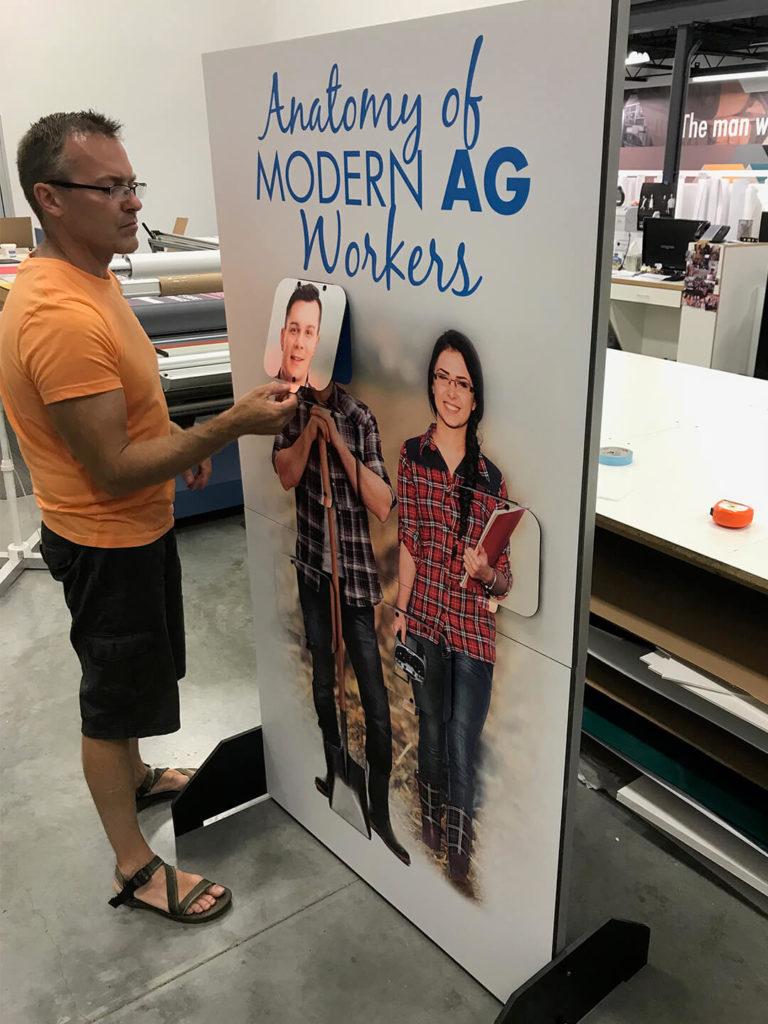
You might remember our interview with the Communications Director at North Dakota’s corn checkoff. That’s not the only checkoff in the state, though, of course. A high-producing ag state like North Dakota has checkoffs for just about everything under the sun.
Now, it’s the soybean checkoff’s time to shine. Shireen Alemadi, the Outreach & Education Coordinator for North Dakota Soy, joined us to talk about the variety of programs she oversees. She also explains how hands-on learning helps engage students and the overlap between ag education and STEM education.
Exhibit Farm: So what does your day-to-day work involve?
Shireen Alemadi: No two days are alike, which is great. Some days I present soybean-related activities to students, other days I work with colleagues to plan educational programs for farmers and/or consumers. Throughout the year we also have opportunities to connect with North Dakota students through a program called Living Ag Classroom. They host events where 10-12 North Dakota commodity and natural-resource groups come together to interact with 4th grade students across the state.
EF: What’s the focus of ND Soy’s educational programs? What are you hoping consumers (or producers) take away?
SA: We focus on 3 groups for our different educational opportunities — students, farmers, and conscientious consumers.
For consumers, we hope they learn that soybeans and soy-based products are used in a very wide range of food, household, and industrial products. And that the list continues to grow with new innovations each year. We also want them to understand more about North Dakota farmers and the care they take with the crops they grow, protecting land and natural resources for the next generations.
For students, we want to introduce them to soybeans and how they grow and develop, and then how they’re used in different foods and products. It’s important for them to learn about a major North Dakota crop and how it impacts their everyday life. We also want students to learn more about farming and how important it is to North Dakota.
For farmers, we provide access to research they can apply on their farms, and access to markets to sell soybeans. We promote soybeans domestically and internationally. Also, we provide educational opportunities for farmers to learn about marketing, trading, and risk management. We want producers to have access to information that will help them be successful and profitable.
EF: How do you plan to use the Palmer Amaranth replicas we’re making? Consumer awareness? Producer education?
SA: The Palmer replicas will be used mostly in producer education. We plan on having them at a variety of ag expos across the state to engage with farmers, agronomists, and others about how important weed management is. They’re part of a larger project in collaboration with North Dakota State University and North Dakota Corn Utilization Council.
The [other displays you’re making,] the Soy Life Cycle display and the Soy House, will be used in the Living Ag Classroom events. Also, the Soy House will be used in some upcoming consumer events to show people the many ways in which soy innovations impact daily life.
EF: What sorts of educational strategies have you found to be most effective?
SA: When working with students, I’ve found that hands-on, active learning has been a great approach (like planting soybean seeds and talking about the inputs needed for seed growth). Depending on the age, setting, and time available, I sometimes give some background information followed by a hands-on activity. (For example, making biodegradable plastic from soybean oil, or doing cocoa chemistry with soy milk and soy lecithin.) It’s important to be prepared to shift strategies during educational activities to make sure all students are getting the most out of the activity.
EF: Lastly, how did you wind up in ag education, and why are you passionate about it?
SA: The specific focus on ag education is new to me — I started with the ND Soybean Council in fall 2021. But I’ve been passionate about STEM education my whole career. Before joining ND Soybean Council, I had been a biology faculty member at a local university, a director for a university summer camp program for K-12 students, and a STEM Manager for a state organization.
Soybeans are so versatile. And whether [we talk about] planting, growing, harvesting, or using soybeans and their byproducts, the new innovations being developed in all areas of STEM come into play with soybean ag education.


